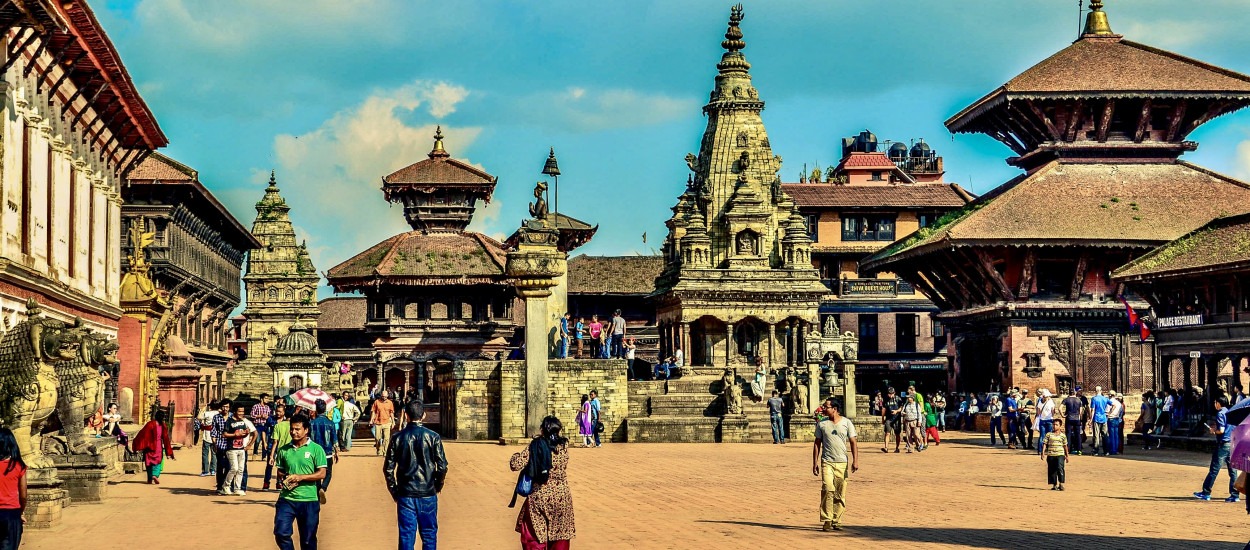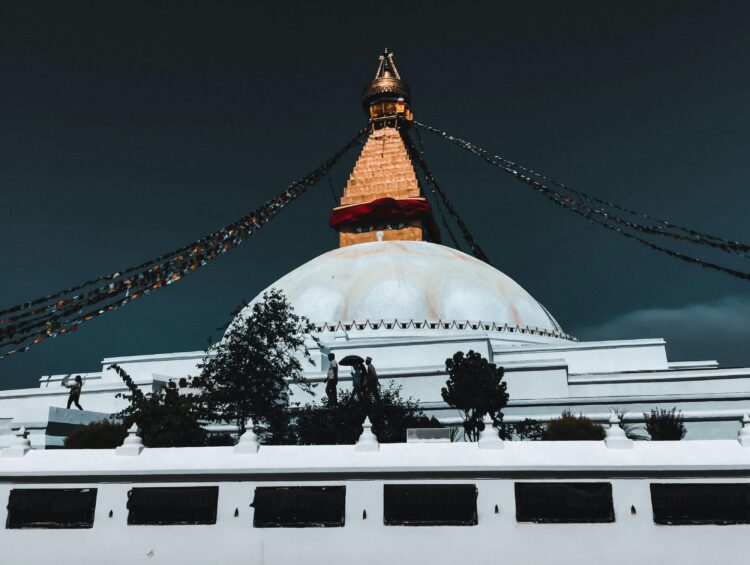Nepal is located amidst the Himalayas, tropical green hills, and mountains studded with glaciers. It boasts stunning landscapes, ancient cultures, and deep-rooted history. Among other attractions in Nepal, the UNESCO World Heritage Sites stand out as very good destinations that will immerse you in the religious, cultural, and natural wealth of the country. With sites stretching from the nice confusion of Kathmandu Valley to the soothing plain of Lumbini, these sites spellout the essence of the uniqueness of Nepalese backgrounds. This guide will take you through the UNESCO World Heritage Sites of Nepal, leading you to iconic temples, wildlife sanctuaries, and majestic mountains.
Kathmandu Valley: A Cultural Treasure Trove
- The Kathmandu Valley, which boasts seven monument zones listed by UNESCO, is a treasure trove of culture. The valley, which is ringed by green hills, is not just the political and historical center of Nepal but also a witness to its artistic and architectural excellence. Each of the monument zones of the valley bears witness to the ancient and medieval past of Nepal, its achievement in art, and its profound spiritual heritage.
- Pashupatinath Temple: Pashupatinath Temple is situated on the banks of the Bagmati River. It is one of the holiest Hindu temples of Lord Shiva. The pagoda-style, wood-beamed temple is a pilgrimage site for Hindus from across the globe. Beyond its appeal as a building, Pashupatinath is of great religious importance, particularly during the Maha Shivaratri festival when it is visited by thousands of devotees.
- Boudhanath Stupa: Just a few steps from the din and chaos of Kathmandu city is the massive Boudhanath Stupa. Dominating the residential homes and shops of the area, Boudhanath is the world’s largest stupa. The historic Buddhist stupa, constructed around the 5th century, represents peace and spiritual enlightenment. Buddha’s all-seeing eyes atop the stupa render it a holy pilgrimage site for Tibetan Buddhists and those searching for tranquility. Pilgrims and monks circumambulate the stupa every day, adding an aura of peace.
- Swayambhunath Stupa (Monkey Temple): Swayambhunath or the Monkey Temple is another important Buddhist pilgrimage site that sits atop a hill overlooking Kathmandu. The temple is steeped in legend, with myths claiming it to be self-manifested and existing since the beginning of time. Its location provides panoramic views of Kathmandu, and the presence of mischievous monkeys makes the temple a dynamic atmosphere. The stupa itself is a beautiful monument, ringed by smaller shrines and delicate carvings, embodying the ideal combination of Buddhist and Hindu faith.
- Durbar Squares and Changu Narayan Temple: Kathmandu Durbar Square, Bhaktapur Durbar Square, and Patan Durbar Square are royal palaces turned public squares, each embodying traditional Newari architecture and craftsmanship. There are palaces, courts, and temples from the Malla era lining the squares when Nepal used to be divided into tiny kingdoms. Every square possesses its own distinct personality, with Bhaktapur renowned for its pottery creations and wood carvings, Patan for metalworkers, and Kathmandu for its rich history as the center of power. The Changu Narayan Temple, a hilltop temple, is among the most ancient Hindu temples in Nepal, built in the 4th century. The temple, a shrine to Lord Vishnu, has some of Nepal’s finest stone carvings and reflects Nepal’s ancient religious heritage.
Lumbini: The Birthplace of Buddha
No trip to Nepal is complete without a visit to Lumbini, known as the birthplace of Lord Buddha and regarded as one of the most significant locations in Buddhism. Nestled in the tranquil southern plains of Nepal, this town attracts pilgrims and tourists from around the world. As a UNESCO World Heritage Site, Lumbini offers a calming environment that invites reflection and spiritual discovery.
Maya Devi Temple At the core of Lumbini lies the Maya Devi Temple, which marks the precise location where Buddha was born. The temple is encompassed by a sacred garden featuring remnants of ancient monasteries and stupas scattered throughout the area. The understated design of the temple contributes to its spiritual essence, allowing visitors an opportunity for contemplation on Buddha’s teachings and life.
Ashoka Pillar Another notable landmark is the Ashoka Pillar, constructed by Emperor Ashoka in 249 BC. This pillar serves as a key historical reference point for recognizing Buddha’s birthplace. Its inscription validates Lumbini’s claim as Buddha’s origins and stands as a vital symbol representing peace and enlightenment.
Additionally, Lumbini’s monastic zone is rich with monasteries embodying various Buddhist traditions, further enriching the spiritual atmosphere present within this cherished locale. Guests can wander through these monasteries—each showcasing unique architectural styles and practices reflective of their respective Buddhist lineages—which contribute immensely to both diversity and tranquility at this sacred site.

Chitwan National Park: A Wildlife Paradise
For those who crave an encounter with nature, Chitwan National Park, a Nepal UNESCO World Heritage Site, offers an unforgettable wildlife experience. As Nepal’s first national park, Chitwan is home to some of the world’s most endangered species and showcases the country’s biodiversity at its finest.
- Bengal Tigers and One-Horned Rhinoceroses Chitwan is one of the last refuges of the elusive Bengal tiger and the endangered one-horned rhinoceros. The park’s dense forests, grasslands, and rivers provide a sanctuary for these magnificent creatures, and conservation efforts have made Chitwan a model for wildlife protection.
- Elephant Safaris and Birdwatching The park offers thrilling jungle safaris, where visitors can explore the wilderness on the back of an elephant or in a jeep. Chitwan is also a haven for birdwatchers, with over 500 species of birds inhabiting the park’s wetlands and forests. Whether you’re spotting the endangered gharial crocodile or enjoying the sight of vibrant birds, Chitwan offers an unparalleled experience of Nepal’s natural world.
Sagarmatha National Park: Home of the Himalayas
Sagarmatha National Park, another UNESCO World Heritage Site, encompasses the Everest region and is famed for its awe-inspiring landscapes and rich cultural heritage.
- Mount Everest Mount Everest, the highest peak in the world, stands tall within Sagarmatha National Park. For mountaineers and adventurers, Everest represents the ultimate challenge. However, even if scaling the mountain isn’t your goal, trekking through the park offers breathtaking views of Everest and its surrounding peaks.
- Sherpa Culture Sagarmatha is also home to the Sherpa people, renowned for their mountaineering skills and deep connection to the mountains. A visit to this park provides a glimpse into Sherpa culture, with traditional villages, monasteries, and prayer flags adding to the spiritual and cultural richness of the region. Travelers can immerse themselves in Sherpa hospitality while learning about their unique customs and way of life.
Conclusion
Nepal UNESCO World Heritage Sites are more than just tourist attractions; they are gateways to understanding the rich tapestry of cultures, religions, and natural beauty that make Nepal truly unique. Whether you’re wandering through the ancient streets of Kathmandu, meditating at the birthplace of Buddha in Lumbini, spotting endangered wildlife in Chitwan, or trekking through the majestic Himalayas in Sagarmatha, each site offers an unforgettable experience. Exploring these sites is not only a journey through history but also a chance to connect with the spiritual and natural wonders that define Nepal.





